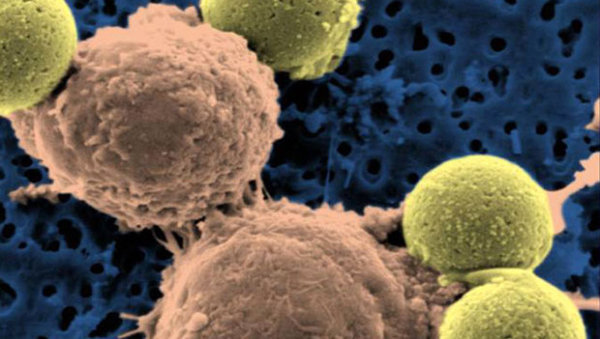Cancer: Has a cure been found?
It is early days yet but a research team from the University of Coimbra in Portugal has announced this week that a first clinical trial on human subjects has revealed positive results in treating cancer of the head and neck - and in one case the tumor disappeared completely.

It is called photodynamic therapy. The molecule, redaporphine, was developed by a research team of the University of Coimbra. It is activated by infrared light and when it comes into contact with oxygen it produces other molecules which destroy all the tissues around it, so it can be steered directly to the tumor it is targeting and the dosage is adjusted to the level of highest efficiency. The molecule then springs into action, destroying the tumor but not the healthy tissue surrpunding it.
Patient in palliative care sees tumor disappear
The trials were conducted on a group of fourteen patients with advanced head and neck cancer, over two years. The most remarkable result was that of a patient who was already so ill he was in palliative care - and the tumor disapeared completely.
The clinical trials will now be conducted on a larger group and it is hoped that this treatment will be available on the market by 2022. The Portuguese firm Luzitin holds the exploitation rights for the molecule redaporphine, developed by the University of Coimbra.
Redaporphine is a photosensitizer, meaning it is activated when it receives the right light, in this case, infrared because this penetrates the human tissue more effectively. When the molecule is in the exact position, in other words, targeted at the tumor it is destined to destroy, it is activated by the infrared light, without which it remains totally inactive.
The molecule is totally synthetic and was developed by the team at Coimbra University led by Professor Luis Arnaut, Full Professor at Coimbra University's Department of Chemistry, and composed also of Mariette Pereira, Carlos Monteiro and Sebastião Formosinho Simões, who unfortunately passed away in December 2016.
The clinical trials were coordinated by Doctor Lúcio Lara Santos in the Oncology departments of the Hospital CUF in Oporto and IPO, the Portuguese Oncology Institute, in Lisbon on fourteen volunteers with spinocellular cancers of the head and neck. The results were very promising, and side effects were slight and easy to control.
Is this the beginning of the end for cancer?
Could this be the beginning of the end for cancer? There are different types of cancer and this therapy is effective for now on head and neck cancers of the spinocellular type. However, the old therapy using radio therapy and chemo-therapy then operating on a patient cutting out the tissue may give way in many cases to personalized targeted therapy, in which the tumor itself is destroyed but the surrounding tissue not.
Letícia Maria Gouveia
Pravda.Ru
Coimbra
Coordinated by João Santos
Pravda.Ru Portugal
Subscribe to Pravda.Ru Telegram channel, Facebook, RSS!





